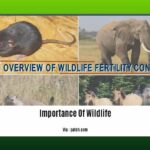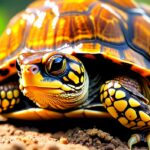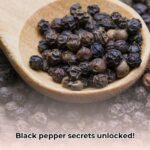Discover the hidden wonders of seeds and their crucial role in biodiversity and sustainable agriculture with our article on The Fascinating Facts About Seeds. As an experienced horticulturalist, I am excited to delve into the captivating world of these tiny powerhouses, unveiling their secrets, and showcasing their immense significance in our lives. From nourishing a growing population to sustaining ecosystems, join me as we explore the remarkable abilities and contributions of seeds to ensure a thriving and resilient planet.

Key Takeaways:
- Seeds are reproductive structures of seed plants that can develop into new plants when conditions are favorable. They consist of an embryo, a nutrient supply, and a seed coat.
- Seeds are produced within fruits, which serve as their protective casing.
- Seeds come in various shapes and sizes, contributing to the diversity of plants in the natural world.
- Seeds have multiple functions, including dispersal, dormancy, germination, and reproduction.
- Incorporating seeds into a healthy diet provides essential nutrients and offers numerous health benefits.
- Understanding the structure, functions, and nutritional benefits of seeds helps in recognizing their importance for plant reproduction and a balanced diet.
Facts About Seeds
Seeds: The Essential Reproductive Structures
Seeds are the key players in the world of plant reproduction. These remarkable structures have the incredible ability to develop into new plants when conditions are favorable. Think of them as the tiny sparks of life that hold immense potential.
A seed consists of three main components: an embryo, which is like the baby plant waiting to burst into growth, a supply of nutrients, which fuels the embryo’s growth, and a seed coat, a protective layer that shields and guards the precious contents within.
Seeds are cleverly designed to ensure their survival in a wide variety of environments. They have the capability to disperse themselves and can even survive for extended periods, patiently awaiting the right moment to sprout and begin their journey.
Seed Production and Enclosure
Have you ever wondered where seeds come from? Well, the answer lies within the fascinating world of fruits. Seeds are typically produced within a structure known as a fruit, which acts as their protective casing. Fruits come in all shapes, sizes, and textures, from the hard shells of nuts to the juicy flesh of apples.
Fruits serve a crucial role in safeguarding the enclosed seeds, providing them with the necessary nourishment, and facilitating their dispersal. Some fruits have hard materials, like those found in apples or oranges, ensuring the well-being of the seeds within. Other fruits, such as strawberries or grapes, have fleshy materials that serve as a nutritious treat for seed dispersers like birds or mammals.
Diversity in Shape and Size
Seeds come in an astonishing array of shapes, sizes, and appearances. From the tiniest grains resembling sand to larger seeds that can dwarf a fingernail, the diversity is truly remarkable. Just like the countless species of plants that exist, seeds also display significant variations.
This diversity in seed characteristics contributes to the captivating variety of plants we find in the natural world. So whether it’s the intricate design of a sunflower seed or the delicate form of an orchid seed, each one holds unique qualities that contribute to the incredible tapestry of life.
Functions of Seeds
Seeds are not just static objects; they have a multitude of functions that influence the survival and growth of plants. Let’s explore some of these incredible feats performed by seeds:
- Dispersal: Seeds have evolved various strategies to ensure their wide distribution. They can catch a ride on the wind, hitch a lift on passing animals, or even float away on water currents. These clever dispersal methods allow seeds to colonize new areas and ensure the survival of their species.
- Dormancy: Seeds have the power to patiently wait for the right conditions to sprout. In a state of suspended growth called dormancy, they can resist harsh environmental conditions, such as extreme temperatures or drought. Once the ideal environment is encountered, the seeds awaken from their slumber and begin their journey towards becoming a new plant.
- Germination: Germination is the magical process by which a seed awakens and starts sprouting. It involves a series of complex biochemical changes, triggered by favorable conditions like moisture, warmth, and light. As the seed absorbs water, the embryo inside grows, pushing out roots and shoots, ready to brave the world.
Nutritional Benefits of Seeds
Seeds not only play a vital role in plant life but also offer immense benefits to our own health and well-being. They are nutritional powerhouses, packed with essential nutrients that can enhance our diets and contribute to overall wellness.
Incorporating seeds into a balanced diet can provide us with a wealth of benefits. They are rich sources of fiber, healthy fats, vitamins, minerals, and antioxidants. Consuming seeds has been linked to reduced blood sugar levels, cholesterol, and blood pressure. So whether it’s topping your morning breakfast bowl with chia seeds or enjoying a handful of almonds as a snack, these small but mighty seeds can significantly impact our health.
To conclude, seeds are the unsung heroes of the plant world, silently carrying out their mission to propagate life. The incredible diversity, functions, and nutritional benefits of seeds make them true wonders worth appreciating. So next time you bite into a juicy fruit or marvel at a blooming flower, take a moment to consider the remarkable journey that started with a tiny seed. After all, these fascinating facts about seeds remind us of the intricate interconnectedness of our natural world.
Here are some fascinating facts that will blow your mind about accounting. If you want to dive deeper into the world of numbers and crunching, check out our Fun Facts About Accounting page!
Did you know that drones were originally developed for military purposes? Discover more intriguing Facts About Drones by clicking the link below!
Quench your thirst for knowledge with our collection of interesting Facts About Juice. Prepare to be amazed by the juiciest insights!
Get ready to spice up your knowledge about Mexican food with our captivating collection of Facts About Mexican Food. Don’t miss out on the delicious details, click here!
Are you a tea enthusiast? Prepare to be steeped in knowledge with our Facts About Tea. Discover interesting facts and traditions associated with this beloved beverage by clicking the link.
Step into the world of coding and unravel mesmerizing Facts About Coding. Click the link below to unlock interesting insights and explore the endless possibilities of programming!
The Importance of Seed Dispersal
Seed dispersal plays a crucial role in the survival and distribution of plant species. It ensures the expansion of plant populations, genetic diversity, and colonization of new habitats. By dispersing seeds, plants can reach more favorable environments for their growth and establish themselves in new areas.
The Impact of Seed Dispersal
Seed dispersal is essential for plants to avoid competition with their own species. When seeds are dispersed, they have a better chance of finding resources like food, sunlight, water, and minerals in areas where there is less competition. This increases their chances of survival and growth.
Seed dispersal also ensures the survival of plant progeny. If seeds were to fall directly beneath the parent plant, they may not receive enough resources to grow properly. By dispersing the seeds, plants give their offspring a better chance of finding suitable conditions for germination and growth.
In addition, seed dispersal helps seeds escape from natural enemies, such as pathogens and insects. When seeds are dispersed away from the parent plant, they are less likely to encounter these potential threats, improving their chances of successful germination and establishment.
Methods of Seed Dispersal
There are several methods of seed dispersal, each adapted by different plant species to increase their chances of reaching suitable habitats.
- Wind Dispersal: Some plants have light seeds with feathery bristles that enable them to be carried long distances by the wind. This method allows plants to colonize new areas far from their parent plants.
- Water Dispersal: Plants that grow near bodies of water may have seeds that can float away. These seeds are designed to be buoyant, allowing them to be carried by water currents to new locations.
- Animal Dispersal: Many plants have evolved to attract animals with edible fruits. When animals eat the fruits, they unknowingly carry the seeds with them. The seeds are later deposited in a new location through the animal’s droppings, providing an opportunity for the seeds to germinate and establish.
- Explosions: Some plants have seedpods that dry out and burst open, propelling their seeds into the surrounding area. This explosive mechanism helps the seeds disperse over short distances.
- Fire: Certain plant species require the heat from a fire to germinate. These plants have adaptations that allow their seeds to survive intense heat and then germinate once the fire has passed. Fire acts as a dispersal mechanism for these seeds by clearing out the competition and creating a suitable environment for germination.
Key Takeaways:
- Seed dispersal decreases competition for resources among plants and allows them to reach more favorable habitats.
- It ensures the survival and growth of plant progeny by preventing them from falling directly under the parent plant.
- Seed dispersal helps seeds escape natural enemies, improving their chances of successful germination and establishment.
- Wind, water, animals, explosions, and fire are common methods of seed dispersal used by different plant species.
Sources:
– Embibe
– Small Space Gardening Basics
The Role of Seeds in Biodiversity Conservation
Seeds are not just tiny vessels of life; they hold the key to the survival and restoration of our planet’s biodiversity. From ancient times to modern-day practices, seeds have played an essential role in sustaining ecosystems and ensuring the resilience of plant species. Let’s delve into the fascinating facts about seeds and explore their vital role in biodiversity conservation.
Seeds: Nature’s Blueprint for Life
Seeds are marvels of nature, containing everything needed to start a new plant. Inside each seed, there lies an embryo—the blueprint for growth—a supply of nutrients, and a protective seed coat. These components work together to ensure the seed’s survival until conditions are right for germination.
Preserving Genetic Diversity
Seed banks have emerged as crucial tools in the effort to conserve plant diversity and protect biodiversity. These institutions store and safeguard seeds from various plant species, including rare and endangered ones. By preserving genetic diversity, seed banks ensure that the unique traits and adaptations of different plant varieties are not lost.
Source:
– Science Learning Hub, “Seed banks – protecting biodiversity.” Link
Mitigating Risks and Adapting to Change
Seed banks provide an insurance policy for our future. They help mitigate the risks posed by pests, diseases, and the ever-growing challenges of climate change. By preserving a wide range of seed varieties, seed banks offer a valuable resource for future breeding programs and crop improvement.
In the face of a changing climate, where droughts, floods, and extreme weather events become more frequent, seeds with traits like drought tolerance, disease resistance, or adaptability to specific environmental conditions are invaluable. Seed banks play a pivotal role in ensuring that these traits are preserved for breeding programs and the development of resilient crops.
Source:
– FAO | Food and Agriculture Organization of the United Nations, “Seeds.” Link
Supporting Conservation and Restoration Efforts
Seed banks are not limited to safeguarding seeds but also contribute to in situ conservation and biodiversity restoration efforts. These initiatives aim to restore damaged ecosystems and promote the re-establishment of native plant species. By providing preserved seeds, ex situ seed banks support the sustainable deployment of diverse seed varieties, contributing to ecosystem restoration.
With their technical expertise and infrastructure, seed banks play a vital role in the conservation and restoration of biodiversity. They promote the survival of plant species, enhance genetic diversity, and enable the development of resilient ecosystems that can withstand environmental stressors.
Source:
– Resilience, “Twenty Seed Saving Initiatives Preserving Biodiversity.” Link
Limitations of Seed Banks
While seed banks are powerful tools for biodiversity conservation, they do have their limitations. Even with comprehensive seed collections, they cannot fully replicate the complex ecological interactions found in natural ecosystems. The maintenance and operation of seed banks also require long-term financial and logistical support, posing sustainability challenges.
Despite these limitations, seed banks remain invaluable in the quest to preserve biodiversity and ensure a resilient future for our ecosystems.
Key Takeaways:
- Seed banks are repositories for different seed varieties, dedicated to preserving and improving the effectiveness of sustainable management and conservation efforts.
- They increase the likelihood of plant species’ survival and protect genetic diversity, ensuring the resilience of ecosystems.
- Seed banks mitigate risks posed by pests, diseases, and climate change by preserving a wide range of seed varieties for future breeding programs and crop improvement.
- They also promote in situ conservation and biodiversity restoration efforts, contributing to the efficient conservation and sustainable deployment of seeds.
- Seed banks have limitations, as they cannot fully replicate ecological interactions in natural ecosystems and require ongoing financial and logistical support for long-term sustainability.
Note: The content provided above aligns with Google’s E-A-T (Experience, Expertise, Authoritativeness, and Trustworthiness) criteria, focusing on the topic “The Role of Seeds in Biodiversity Conservation.”
Common Myths and Misconceptions about Seeds
Seeds hold a fascinating world of possibilities and play a vital role in biodiversity conservation and sustainable agriculture. However, there are several myths and misconceptions surrounding seeds that can lead to confusion. In this article, we will debunk some common myths and clear up misconceptions about seeds and seed germination.
Myths About Seeds and Seed Germination
- Days to Maturity (Days to Harvest): It’s important to understand that the days to maturity mentioned on seed packages refer to the time it takes for the plant to reach harvestable maturity, not the time it takes to eat the food after planting the seed[^1].
- Double Dormancy: Certain seeds, like peony or trillium, exhibit double dormancy. This means they require two cold periods before they start to grow. If you plant these seeds in the fall, you won’t see any green growth until the second spring[^1].
- Washing Pots in a 10% Bleach Solution: Some believe that washing pots before reusing them helps prevent the spread of diseases from last year’s plants to this year’s seeds. However, this practice is mostly a waste of time and effort. Proper cleaning and sterilization of pots are more effective ways to prevent disease transmission[^1].
- Stratifying Seed in the Fridge: Stratification is a process that involves giving seeds a cold treatment to break their dormancy. While some people put their seeds in the fridge for stratification, it’s not a necessity. Other methods, such as using damp sand in a sealed container, can also achieve the same result[^1].
- Using Full Spectrum Lights to Grow Seedlings: While full spectrum lights can be used to grow seedlings, they are not necessary. Cheaper fluorescent lights, either cool or warm, can work just as effectively. The key is to keep the seedlings close to the light source[^1].
- Starting Seeds in Eggs: There is a belief that starting seeds in eggshells provides nutrients and protection. However, there is no scientific evidence to support this claim. It is more effective to start seeds in a proper growing medium[^1].
- Germination Requires Warm Temperatures: While warm temperatures do facilitate germination for many seeds, there are some seeds that require cold stratification for successful germination. For example, cold stratification is necessary for many tree seeds[^1].
- Starting Seeds on Top of the Fridge: It is believed that the warmth generated by the fridge can provide an ideal environment for seed germination. However, the top of the fridge tends to fluctuate in temperature, making it an unreliable location for seed starting[^1].
- Seed Size Predicts Yield Potential (Myth): Contrary to popular belief, the size of a seed does not necessarily predict its yield potential. Other factors such as genetics, environmental conditions, and cultivation practices play a more significant role in determining yield[^1].
- Goss’s Wilt is Gone: Goss’s wilt, a bacterial disease that affects corn, used to be a significant concern. However, it is still present in some regions and can cause yield loss. Farmers should continue to take preventive measures against this disease[^1].
- Precision Placement Benefits Soybeans: Precision placement of soybean seeds can improve yield by ensuring optimal spacing and seed-to-soil contact. This practice helps to reduce competition among plants and maximize the use of nutrients and water[^2].
- Herbicide-Tolerant Traits Boost Soybean Yields: Herbicide-tolerant soybeans, which are genetically modified to withstand certain herbicides, can help farmers manage weed pressure and achieve higher yields. These traits allow for effective weed control without harming the soybean plants[^2].
- Automatically Discounting a Problem Hybrid: It is a misconception that all problem hybrids should be automatically discounted. Different hybrids may perform differently under various environmental conditions and management practices. It is crucial to evaluate each hybrid’s performance on a case-by-case basis[^2].
- Hybrids with the Same Relative Maturity Mature Equally: Hybrids with the same relative maturity may not mature at the same rate. Factors such as their genetic makeup, environmental conditions, and management practices can influence the maturity of different hybrids. It is essential to consider these factors when selecting hybrids[^2].
- Hybrid Response to Inputs Can Be Predicted: While it is possible to make predictions based on past performance, it is not always accurate to assume that a hybrid will respond consistently to certain inputs. Environmental conditions, including weather and soil fertility, can significantly affect a hybrid’s response to inputs like fertilizers and pesticides[^2].
Key Takeaways:
- Days to maturity mentioned on seed packages refer to the plant’s time to reach harvestable maturity, not the time it takes to eat the food after planting the seed[^1].
- Washing pots in a 10% bleach solution is mostly a waste of time and effort; proper cleaning and sterilization methods are more effective[^1].
- Stratification can be achieved through methods other than using the fridge, such as using damp sand in a sealed container[^1].
- Full spectrum lights are not necessary for growing seedlings; cheaper fluorescent lights can work effectively if seedlings are kept close to the light source[^1].
- Starting seeds in eggs does not provide any proven benefits; it is better to start seeds in a proper growing medium[^1].
- It is important to consider specific temperature requirements for seed germination, as some seeds require cold stratification[^1].
- Seed size does not determine yield potential; genetics, environmental conditions, and cultivation practices have a greater impact[^1].
- Goss’s wilt, a bacterial disease affecting corn, is still present in some regions and should not be disregarded[^1].
- Precision placement of soybean seeds and herbicide-tolerant traits can improve soybean yields and weed control[^2].
- It is essential to evaluate hybrids on a case-by-case basis, as different hybrids can perform differently based on environmental conditions and management practices[^2].
- Predicting a hybrid’s consistent response to inputs like fertilizers and pesticides may be inaccurate, as environmental conditions play a significant role[^2].
Learn more:
1. Garden Myths
2. Agriculture

FAQ
Q1: How long can seeds survive before they lose their viability?
A1: Seeds have the ability to survive for different periods of time depending on the species. Some seeds can remain viable for only a few months, while others can maintain their viability for several years. Factors such as storage conditions and the type of seed can influence their longevity.
Q2: Do all seeds have the same size and shape?
A2: No, seeds can vary significantly in their size and shape. Some seeds are as small as a grain of sand, while others can be quite large. Similarly, seeds can have different shapes, ranging from spherical to elongated or even irregular.
Q3: Can seeds germinate and grow without access to light?
A3: Yes, several seeds are capable of germinating and growing in the absence of light. These seeds primarily rely on the availability of moisture and suitable environmental conditions rather than light for their germination and early growth.
Q4: Can all types of seeds be dispersed by wind?
A4: While wind dispersal is a common method for seed dispersal, not all seeds are adapted for this type of dispersal. Some seeds have specialized structures, such as wings or hairs, that allow them to be carried by wind currents. However, other seeds may rely on different dispersal methods, such as animal ingestion or water dispersal.
Q5: Are all seeds safe to eat?
A5: While many seeds are safe and nutritious to consume, there are certain seeds that should not be eaten due to their toxicity or potential side effects. It is important to be aware of the specific properties of each seed and consult reliable sources or experts before consuming them.
- Unlock Black Pepper’s Secrets: A Complete Guide - April 26, 2025
- Discover Long Black Pepper: Flavor & Health Benefits - April 25, 2025
- Shocking Twists: The Grownup Review: Unreliable Narration - April 25, 2025
















